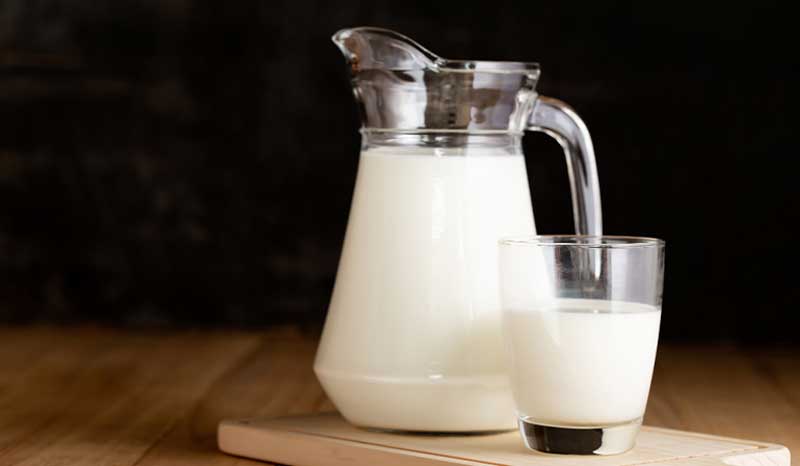Protein In 400 ml of Milk
Milk has been a staple in Indian households for centuries, providing essential nutrients for people of all ages.
Whether you enjoy a glass of warm milk before bed, mix it into your tea, or use it in delicious recipes, milk is a powerhouse of nutrition, especially protein.
But have you ever wondered exactly how much protein is in 400 ml of milk and how it benefits your health?
In this comprehensive guide, we will explore everything you need to know about the protein content in milk, its benefits, and how to maximize its nutritional value in your diet.
Protein in 400 ml of Milk
The protein content in milk varies depending on the type of milk you consume.
400 ml of milk provides approximately 12-16 grams of protein, depending on the type (cow, buffalo, or toned milk), supporting muscle growth and overall health.
Let’s break it down:
✔ Cow’s Milk (Full Cream) – Approximately 3.2 grams of protein per 100 ml
400 ml = 12.8 grams of protein
✔ Toned Milk – Approximately 3 grams of protein per 100 ml
400 ml = 12 grams of protein
✔ Double-Toned Milk – Approximately 2.8 grams of protein per 100 ml
400 ml = 11.2 grams of protein
✔ Buffalo Milk – Approximately 4 grams of protein per 100 ml
400 ml = 16 grams of protein
✔ Plant-Based Milk (Almond, Soy, Oat, etc.) – Varies by brand but generally between 1 to 3 grams per 100 ml
Among these options, buffalo milk contains the highest protein content, making it a great choice for individuals looking to increase their protein intake naturally.
Why is Protein in Milk Important?
Protein is a vital macronutrient required for various bodily functions.
The protein in milk primarily consists of casein (80%) and whey (20%), both of which are high-quality proteins containing all essential amino acids. Here’s why it matters:
-
Muscle Growth & Repair – Ideal for athletes, bodybuilders, and fitness enthusiasts.
-
Bone Health – Works with calcium and vitamin D to strengthen bones.
-
Weight Management – Increases satiety, reducing unnecessary calorie intake.
-
Immune System Boost – Helps in the production of antibodies and enzymes.
-
Children’s Growth – Essential for the development of muscles, tissues, and cognitive function.
Best Ways to Consume 400 ml Milk for Maximum Protein Absorption
To make the most of the protein in milk, consider these consumption methods:
✔️ Drink it Plain – A simple glass of warm or cold milk can give you the full benefits.
Milk Shakes & Smoothies – Blend with fruits, nuts, and seeds for added nutrition.
✔️ Paneer (Cottage Cheese) – Paneer is a fantastic source of casein protein; making 200 grams of paneer from 400 ml of milk can be a great protein-packed meal.
✔️ Curd & Yogurt – Fermenting milk into curd not only retains protein but also improves digestion.
✔️ Buttermilk (Chaas) – A lighter way to enjoy milk’s benefits while keeping digestion smooth.
✔️ Milk-Based Desserts – Kheer, phirni, and rabri are delicious ways to consume milk, but be mindful of added sugar.
Milk vs. Other Protein Sources: A Comparison
How does milk’s protein content compare with other protein-rich foods? Let’s take a look:
| Food Item | Protein per 100g |
|---|---|
| Cow’s Milk (Full Cream) | 3.2g |
| Buffalo Milk | 4g |
| Paneer | 18g |
| Curd/Yogurt | 4g |
| Eggs | 13g |
| Chicken Breast | 31g |
| Lentils (Dal) | 9g |
| Almonds | 21g |
While milk may not be as protein-dense as meat or legumes, it provides complete protein with all essential amino acids, making it a valuable addition to a balanced diet.
Who Should Drink 400 ml of Milk Daily?
Milk is beneficial for almost everyone, but some people can especially gain from consuming 400 ml daily:
🌟 Children & Teenagers – Supports growth, brain development, and overall health.
🌟 Athletes & Gym Enthusiasts – Helps in muscle recovery and endurance.
🌟 Elderly Individuals – Maintains bone density and prevents osteoporosis.
🌟 Pregnant & Lactating Women – Provides essential nutrients for the baby’s development.
🌟 People with a Vegetarian Diet – Offers a rich source of protein without relying on meat.
However, those who are lactose intolerant should opt for lactose-free milk or plant-based alternatives such as almond, soy, or oat milk.
How to Include 400 ml Milk in Your Daily Diet
If you struggle to consume 400 ml of milk directly, here are some easy ways to incorporate it into your daily meals:
-
Breakfast: Add milk to your oatmeal, cornflakes, or protein shake.
-
Lunch: Use curd as a side dish or make a nutritious lassi.
-
Evening Snack: Enjoy a banana milkshake or a fruit smoothie.
-
Dinner: Prepare paneer-based dishes or have a warm glass of turmeric milk before bed.
Conclusion
Milk is an incredible source of high-quality protein, making it an essential part of an Indian diet.
Whether you’re aiming for muscle growth, better bone health, or overall nutrition, 400 ml of milk daily can significantly contribute to your protein intake.
By consuming it in different forms paneer, curd, buttermilk, or smoothies you can enjoy its benefits while keeping your meals interesting and delicious.
So, go ahead and make milk a daily part of your diet to unlock its full nutritional potential!
